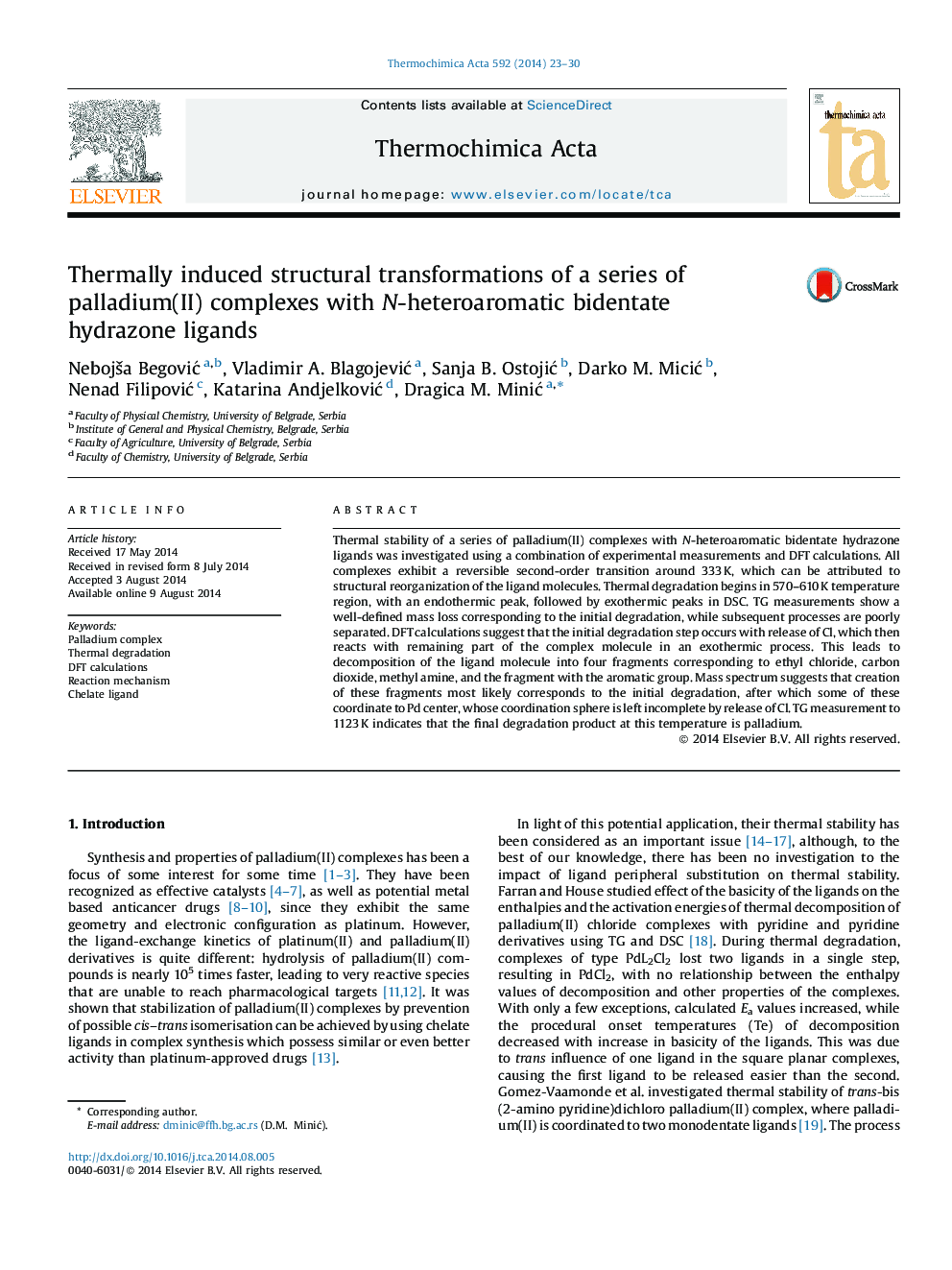| کد مقاله | کد نشریه | سال انتشار | مقاله انگلیسی | نسخه تمام متن |
|---|---|---|---|---|
| 673141 | 1459492 | 2014 | 8 صفحه PDF | دانلود رایگان |

• Series of three palladium complexes with bidentate hydrazone ligands is investigated.
• Thermal degradation begins in all three complexes at 570–610 K with release of Cl.
• Cl reacts exothermically with adjacent molecules and causes further fragmentation.
• Individual fragments are identified in DFT calculations and validated in mass spectrum.
• Peripheral ligand substitution affects thermal decomposition after initial degradation.
Thermal stability of a series of palladium(II) complexes with N-heteroaromatic bidentate hydrazone ligands was investigated using a combination of experimental measurements and DFT calculations. All complexes exhibit a reversible second-order transition around 333 K, which can be attributed to structural reorganization of the ligand molecules. Thermal degradation begins in 570–610 K temperature region, with an endothermic peak, followed by exothermic peaks in DSC. TG measurements show a well-defined mass loss corresponding to the initial degradation, while subsequent processes are poorly separated. DFT calculations suggest that the initial degradation step occurs with release of Cl, which then reacts with remaining part of the complex molecule in an exothermic process. This leads to decomposition of the ligand molecule into four fragments corresponding to ethyl chloride, carbon dioxide, methyl amine, and the fragment with the aromatic group. Mass spectrum suggests that creation of these fragments most likely corresponds to the initial degradation, after which some of these coordinate to Pd center, whose coordination sphere is left incomplete by release of Cl. TG measurement to 1123 K indicates that the final degradation product at this temperature is palladium.
Figure optionsDownload as PowerPoint slide
Journal: Thermochimica Acta - Volume 592, 20 September 2014, Pages 23–30